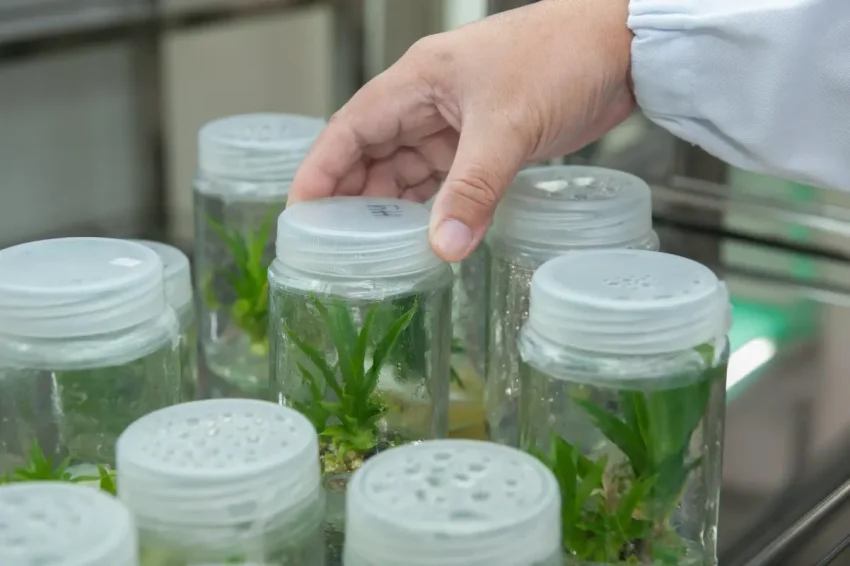Designing User-Friendly Interfaces for Biotech Applications

Creating an intuitive and accessible user interface (UI) is critical in any technology sector. It is also something that takes on an even more significant importance in biotechnology applications.
Given the complexity of these applications, achieving a user-friendly design can help streamline workflows. It can also enhance user satisfaction and reduce the likelihood of error.
A well-designed UI not only aids in usability but also ensures that the end-users can efficiently engage with the applications without extensive training. If you want to learn more, keep on reading.
Contents
The Importance of User-Centric Design
User-centric design focuses on understanding the users’ needs, goals, and preferences. In the context of biotechnology applications, where diverse stakeholders-such as researchers, lab technicians, and healthcare professionals-interact with sophisticated tools, a tailored approach becomes essential.
By prioritizing real user feedback, developers of biotechnology applications can identify specific pain points that may otherwise go unnoticed. This can lead to creating interfaces that are not only functional but also engaging and enjoyable for users. It fosters a connection between the user and the technology, greatly enhancing their efficiency and effectiveness in a field where precision is paramount.
Key Principles of Designing User-Friendly Interfaces
To create user-friendly interfaces in biotechnology applications, several key principles should be adhered to. Here are a few examples:
Simplicity
A simple design helps people use an app without getting confused. When there are too many buttons or words, it’s hard to know what to do first. By showing only what’s needed, users can focus and finish tasks faster. This makes the app feel easier to use and less stressful.
Consistency
When things in the app look and work the same way, people can learn it faster. If every screen uses the same words, colors, and button styles, users don’t have to guess. They feel more sure about what will happen when they click something. This makes the app more friendly and easy to use.
Feedback
People want to know if the app is working after they do something. A short message like “Form sent” or a checkmark lets them know the action was done. If they don’t see feedback, they might get confused or try again when they don’t need to. Good feedback builds trust in the app.
Accessibility
Everyone should be able to use the app, even if they have trouble seeing, hearing, or moving. This means using big text, clear colors, and labels for images. Screen readers help blind users, and captions help people who are deaf. Making the app accessible helps more people use it well.
Adhering to these principles can significantly improve user interaction within biotechnology applications. For instance, a laboratory management tool that clearly displays data visualization can save time for researchers and minimize errors while interpreting complex datasets. Check out Homesteading if you’re looking for some insights.
Leveraging Technology in UI Design
New technologies like artificial intelligence (AI) and machine learning (ML) can make biotechnology applications easier to use. These tools help create smart user interfaces that can adjust to how people use them. For example, an app might watch how you use its features and learn from it. Then, it can change the interface to make tasks easier or faster. This is helpful because it saves time and makes difficult tasks simpler to do.
Another great technology is natural language processing (NLP). This allows users to talk to apps using their voice instead of typing. In biotechnology, this can be a big help for people who have trouble using keyboards or mice. Voice commands can make it easier for them to use the application, making technology more accessible to a wider range of people. It reduces the barriers for users and makes biotechnology tools more usable for everyone.
These technologies work together to make biotechnology software more intuitive and easier to navigate. AI, ML, and NLP can change how users interact with the software, making tasks faster and simpler.
The Role of Prototyping in UI Development
Prototyping is a big part of making user-friendly software. It helps show what the app might look like and how people will use it. In biotech, this is very helpful. A simple model, or prototype, lets designers try out ideas early. They can see what works and what doesn’t before writing too much code. This saves time and money.
Prototypes also help spot problems in how users move through the app. By watching people use it, designers can fix confusing parts. Getting feedback early is key. Real users often see problems that developers miss. When users and designers work together, the end product is better. This makes biotech tools easier to use and more helpful in real life.
Testing and Refining Your Interface
Testing is a key step when making a user interface. It helps designers and developers see how real people use the app. Usability testing shows if users can finish tasks, how many mistakes they make, and how they feel while using the app. These details help teams make the app easier to use. In biotechnology, this is very important. Even a small error can lead to big problems in labs or patient care. That’s why careful testing is a must.
One helpful tool is eye-tracking technology. It shows where users look on the screen and what grabs their attention. This helps teams place buttons, labels, and menus in the right spots. If users are confused, the layout may need to change. Testing helps find these problems early.
Even after the app is launched, testing should keep going. As users change how they work or as new tools appear, the app may need updates. Making small improvements over time helps the app stay useful and easy to use. In biotech, this ongoing care makes sure the software keeps up with the needs of its users.
Investing in User-Friendly Biotechnology Applications
Making biotech apps easy to use is very important. It helps people work faster, make fewer mistakes, and have a better experience. Good design starts with listening to users and using their ideas. It also means using smart tools, following simple design rules, and testing often.
As biotech grows, apps must stay easy to use to keep up. When done right, these steps can lead to better tools that help the industry work better and faster.
For more related topics, check out the rest of our blog!



